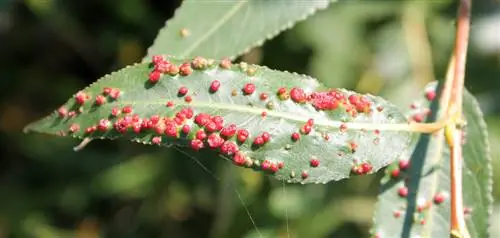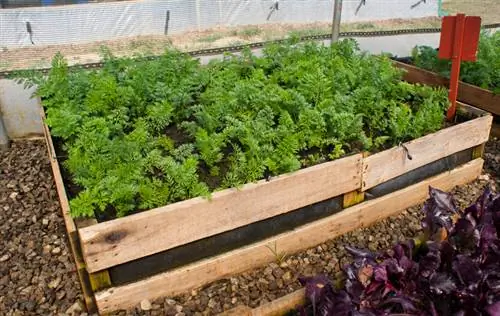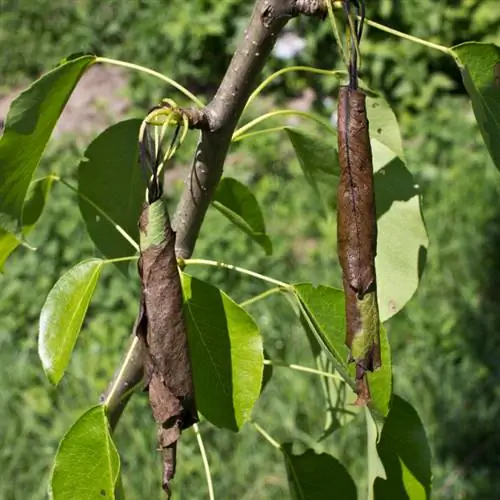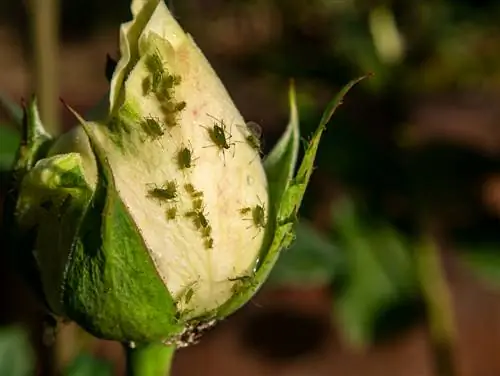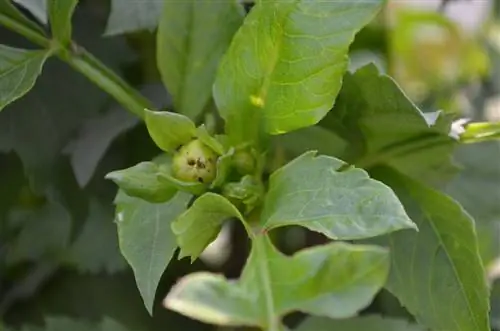- Author admin [email protected].
- Public 2023-12-16 16:46.
- Last modified 2025-01-23 11:21.
Is your pasture looking worrisome lately? There may be a pest infestation. Although willows are actually quite resistant to disease, numerous beetles occasionally appear on their leaves and can cause serious damage. Here you will find out how to recognize the parasites in good time and how to put an end to them.
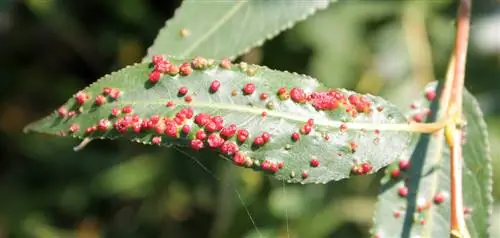
What pests attack willows and how can you combat them?
Common pests on willows are the blue willow leaf beetle, the willow sawfly, the willow gall sawfly and the willow borer. They can cause damage such as leaf damage, leaf changes or wood damage. If there is a severe infestation, treatment is necessary to protect the pasture.
Common Pests
- the blue willow leaf beetle
- the willow sawfly
- the willow gall sawfly
- the willow borer
The blue willow leaf beetle
You can recognize the pest Phyllodecta vitellinae with the naked eye by the three to six centimeter large, bronze, copper or blue colored larvae. The famous window corrosion is also visible. The beetle feeds on the leaves, which then turn brown. The first generation hatches in May or June, while the second does not take long to emerge in late autumn or winter. Older willows usually do not suffer much damage. However, in young trees, an infestation can lead to death. That's why even fungicides are approved for treatment. But think carefully beforehand whether you really want to use them.
The willow sawfly
The larvae of Nematus pavidus are considered particularly voracious. They eat from the edge of the leaf right down to the veins and leave only a few residues of the foliage behind. The six to seven millimeter large pests have a striking appearance:
- glossy black head
- black dots
- mainly green colored
- with orange or yellow body parts
- black vertical stripes on the back
This beetle also comes in two generations. It attacks the pasture once from April to June, and again from August to September. Large trees have comparatively little leaf loss. The treatment of young trees is similar to that of the willow leaf beetle.
The willow gall sawfly
Are there reddish growths or leaf deformations on your pasture? Then there is an infestation of the willow gall sawfly. The symptoms primarily appear in June. The black wasp lays its larvae on the leaves as early as May. Although their infestation results in an unsightly appearance, you don't have to worry about major damage. Therefore, treatment is not necessary.
The Willow Borer
The brownish butterfly with a wingspan of up to 10 cm lays its eggs under the bark of the willow. From then on, the 7 cm long caterpillars eat their way through the wood and leave behind fine, crumbly substances. In the early stages, you should try to remove the larvae manually. In the worst case scenario, the only way to avoid further spread is to cut down the pasture.

